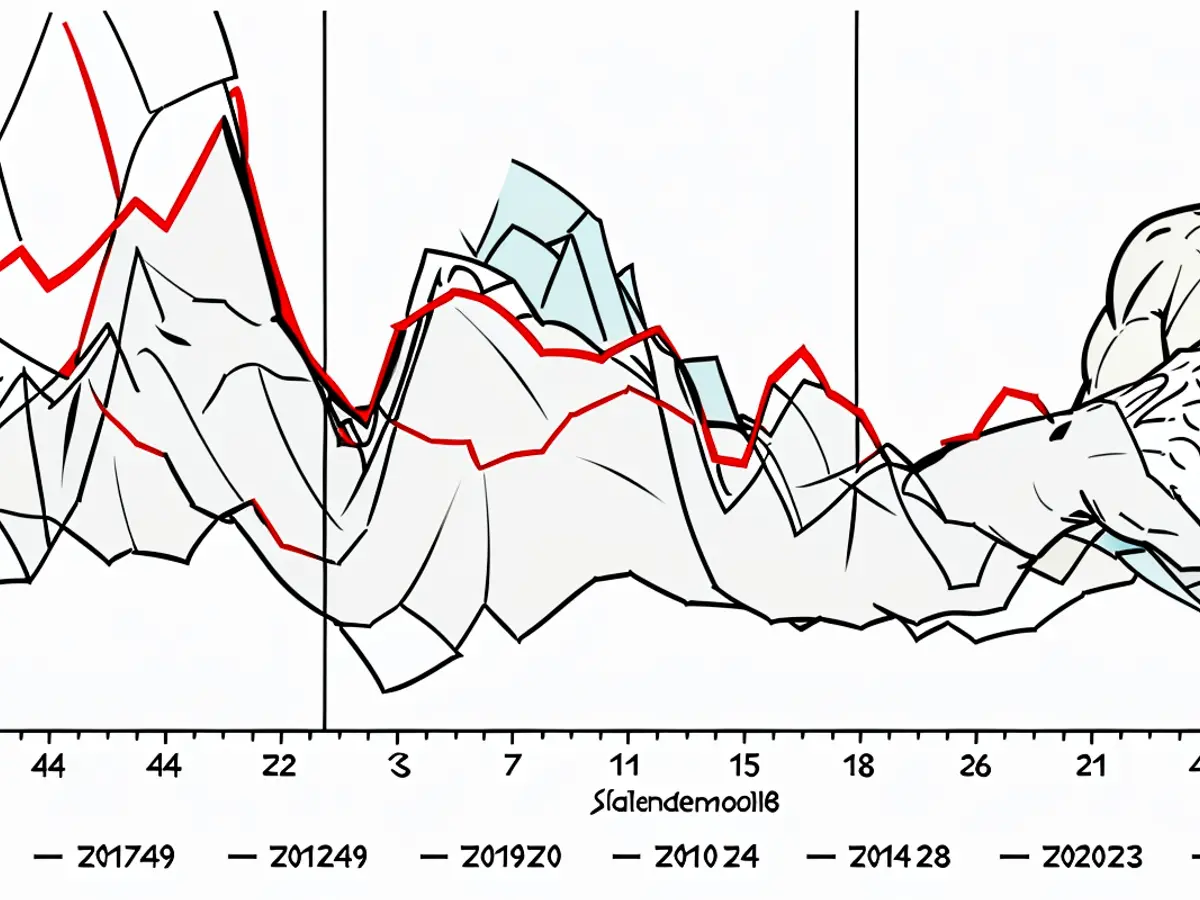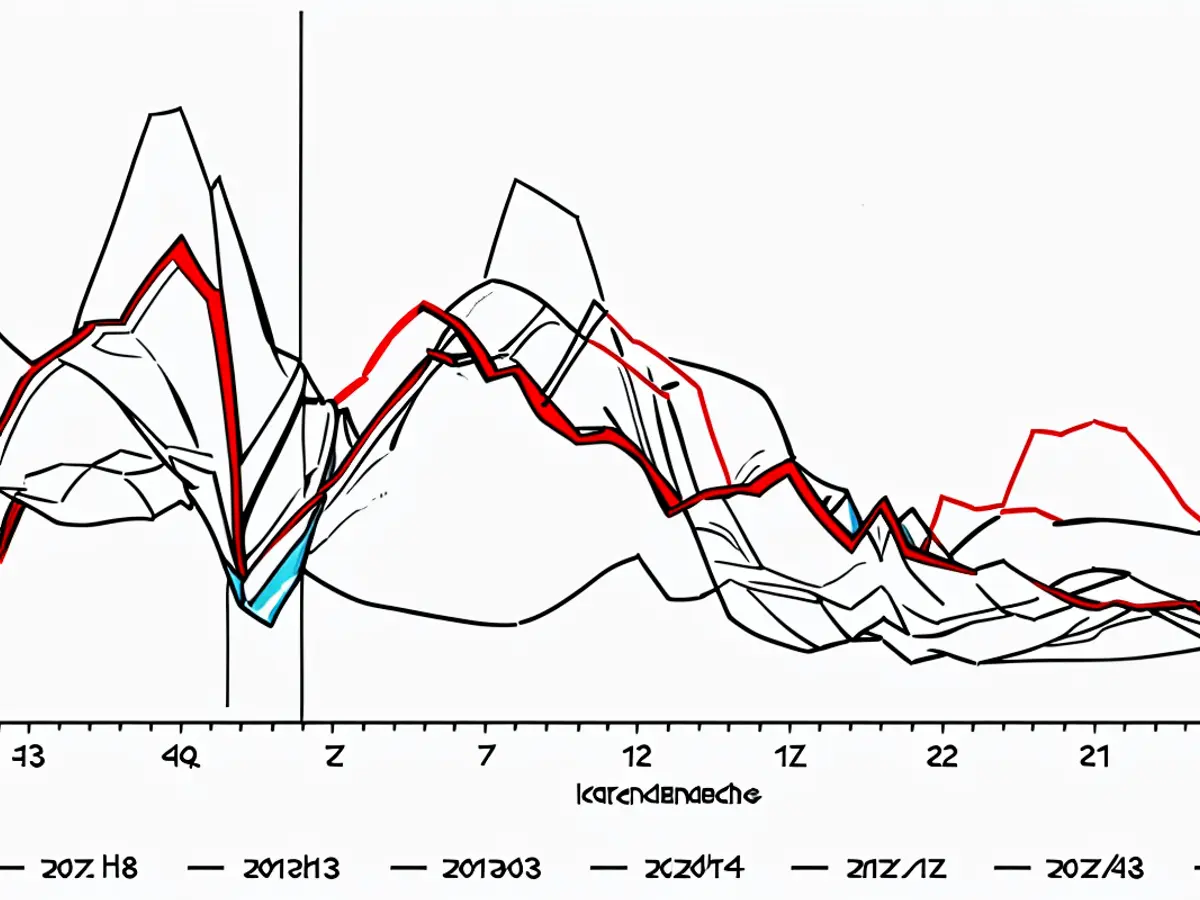Heatwave - Which bacteria are currently bothering us
## Are we really experiencing a pronounced "common cold" or flu season right now?
The impression is not deceiving, as the data from the responsible Robert Koch Institute (RKI) in Berlin shows. What is commonly referred to as a "common cold" or "summer flu" in colloquial language means "acute respiratory infection" or simply "ARI" in technical terms. This includes all acute respiratory infections from the influenza-like illness caused by any of the dozens of Rhinoviruses to the "real" Influenza, as well as an infection with one of the currently circulating variants of the pandemic Coronavirus Sars-CoV-2. Since testing for this is no longer being carried out to a great extent, the epidemiologists and statisticians at the RKI are analyzing current and historical data in their computer models and estimating the actual infection situation. This is currently at record levels, with approximately 60,000 of 100,000 inhabitants reporting coughing and sneezing in the latest RKI weekly report, which is around five million in total. In the previous week, an incidence of 4,900 was recorded. The trend is therefore rising (red line).
Are these illnesses severe?
Caution is warranted, at least. If one looks at the number of people seeking medical help for respiratory infection symptoms in doctors' offices or even in hospitals, the situation is little changed, although higher than in the years before the Coronapandemic. Approximately 830,000 practice visits due to influenza-like symptoms were recorded alone in the first week of July. This is about double the number in pre-pandemic years or even the previous year.
When looking at age groups, it is particularly affected by children under the age of four and schoolchildren up to the age of 14. Young people and younger adults up to the age of 34 are also above the average for the entire population. This is not surprising, as these age groups have the most contacts. Contacts are the fuel for infection processes.

Despite the relatively high infection numbers, the level of hospitalizations due to respiratory infections is completely unremarkable on average compared to previous years. Severe cases are therefore fortunately rather rare. However, significantly increased values compared to previous years can be seen in the age group from school entry to 34 years. But even in this group, only about five in a hundred thousand people need to be hospitalized. Most recover with cold symptoms. A recent US study has shown that above all, coughing often requires patience. On average, it took between 15 and 18 days for the lungs to calm down, regardless of which agent caused the cough. European studies come to similar conclusions.
Are investigations being carried out on circulating pathogens after the Coronapandemic?
Despite the Coronapandemic, investigations on circulating pathogens are still being carried out. The Robert Koch Institute, for example, continues to monitor the situation closely and regularly publishes reports on the current situation. In addition, there are ongoing research projects to better understand the interaction between different pathogens and the immune system, as well as the development of new diagnostic and therapeutic approaches. It is important to note that the focus of public health measures has shifted to controlling the spread of Sars-CoV-2, but other respiratory infections continue to pose a health risk and require monitoring and prevention efforts.
The European Centre for Disease Prevention and Control (ECDC) plays a role in monitoring the wave of respiratory infections. Regular data from the approximately 700 distributed "Sentinel Practices" across the country reach the Robert Koch Institute (RKI) regarding the current infection situation. However, the number of laboratory-tested samples is low, as a harmless cold is not reportable to us. Not every patient who consults a doctor due to persistent, but still relatively mild respiratory symptoms receives a swab. At least one "ILI" (Influenza-like illness) must be present for a swab to be taken. In addition to the common cold symptoms such as sneezing, hoarseness, or coughing, typical flu symptoms like fever, fatigue, or joint pain may also occur. If samples are taken as a precaution, laboratories in our country are legally obliged to report a finding of influenza, RSV (Respiratory Syncytial Virus), or Sars-CoV-2 to the respective health department.

Which viruses are particularly common at the moment?
A total of 99 samples were tested in the laboratory in the last reporting week. About half of them were positive. Particularly many findings were for typical respiratory viruses (Rhinoviruses) and Sars-CoV-2. These two pathogens together accounted for about three quarters of the cases, with Rhinoviruses significantly outnumbering Coronaviruses. If we look more closely at the Coronaviruses, a variant labeled "JN.1" is currently gaining ground. This variant also belongs to the large family of dominant Omikron variants since the end of 2021. A vaccine for this Subvariant JN.1 will soon be available to make the Corona vaccine even more effective – similar to the seasonal flu vaccine. It particularly benefits older adults and people with pre-existing conditions by providing additional protection against severe Covid-19 courses. Those who have already been infected with JN.1 should ideally build antibodies against this virus type and its related variants like KP.2 and KP.3. The flu (Influenza) currently plays almost no role. In other words, there is no "summer flu".
Do the causes of respiratory infections not typically become active in warmer seasons?
We have already noticed during the pandemic that at least this Coronavirus does not seem to adhere to seasonal patterns. There were even "summer waves" recorded. Three waves were documented in 2022. Their peak periods were in March, July, and October. However, this Coronavirus is also one that finds good access to our mucous membranes in the mouth and throat when it is rather cool and the first line of defense of our immune system is weaker than in summer temperatures. However, these findings do not fully explain the complex nature of an epidemic. Viruses are not migratory birds that only appear at specific months. Rather, they are always present somewhere. And if the interaction of pathogens, environment, and also our own behavior results in unexpected inflection waves, even for experts, unforeseen infection waves can occur, even in unusual seasons. The fact that we are dealing with a rather cool and wet summer could be one of many factors. Because we spend more time than usual in enclosed spaces due to the frequent rain, the risk of infection increases.

Events such as the recently concluded Men's European Football Championship can contribute to increased infection numbers, as a recently published study in the journal "Science" shows. The research team analyzed data collected during the previous tournament in 2021 by the British Corona App. On days when the national teams of England or Wales participated in a game, there was a clear peak in the number of registered infections. Not surprisingly, outbreaks grew in the course of the Europameisterschaft and reached their peak at the final on July 11, 2021, which England lost in a penalty shootout against Italy.
How can I protect myself and others?
The same precautions recommended for infection risk with respiratory diseases throughout the year apply in this summer: keep a distance and, in case of illness, reduce contact with others as much as possible. Due to the different modes of transmission, hygiene is also important. Respiratory infections can be contracted not only through droplet infections but also through contact infections. Enteroviruses, which multiply in the intestine and are excreted with feces, are now in season, although they are hardly detectable in samples. Regular hand washing reduces the likelihood of infection in any case. Lastly, relevant vaccinations should be administered or updated in a timely manner.
The virus causing the common cold, known as Rhinoviruses, is currently among the most common pathogens, along with Sars-CoV-2, according to the RKI's latest report. Despite high infection numbers, severe cases and hospitalizations are relatively uncommon, with children and young adults being particularly affected. Despite the Coronapandemic, investigations on circulating pathogens, including Rhinoviruses and other respiratory viruses, continue to be carried out by organizations like the RKI and ECDC.









